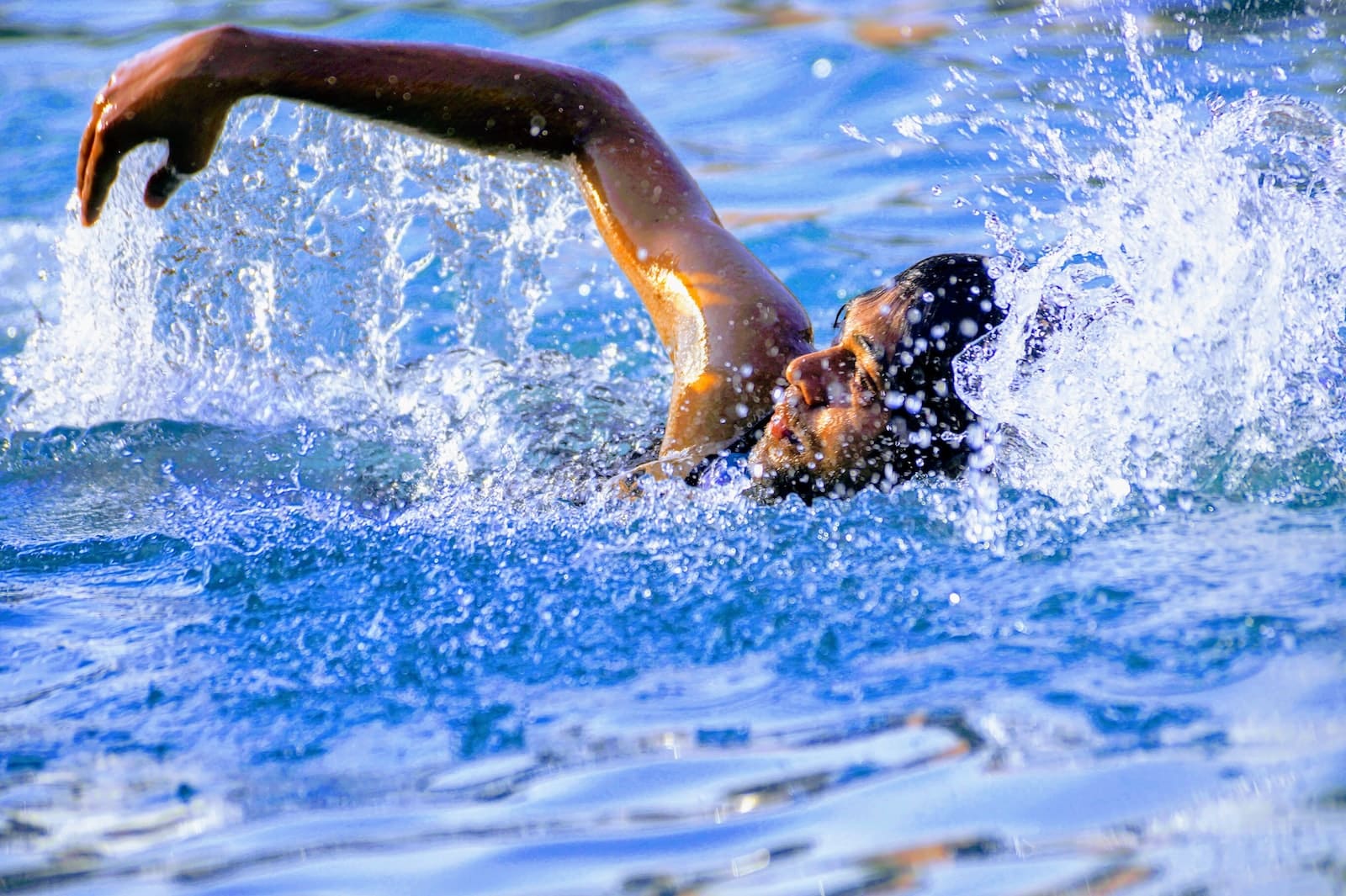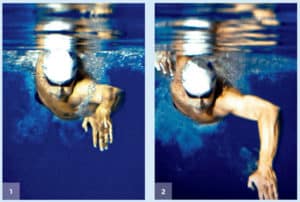The Elbow Nudge – High elbows

Swimming with high elbows is a common technical refrain – but what part of the stroke are people talking about? The bit over the water (recovery)? Or the bit under the water? The bit that the majority of people focus on is what is going on over the water, the bit that looks pretty and relaxed. But while this can help you stay relaxed and maintain a good direction, this isn’t going to propel you forward any faster. Where high elbows are really important is securing pressure UNDER the water to give you good leverage.

With the pictures above, in the first you can see that the elbow is getting lower and lower so that the forearm is remaining horizontal – parallel to the surface of the water. As a result any pressure on the water is in a “pulling” motion from the shoulder, with very little power. My swimmers will be familiar with me referring to this as T-Rex arms!

If your hands are level with or above your elbows, then you end up clawing at the water rather than pressing it back.
What we really want to do is gain pressure with the forearm as well as the hand on the water. This allows us to get the lats involved in the back – which are far bigger and stronger than the shoulder muscles. These muscles are the reason that Olympic swimmers are triangular shaped, so not just relying on the shoulders. You may have heard the term reaching over the barrel.
High Elbows (Or Wide Elbows) – How To Do It
When you are swimming along with your arm stretched forward, think about giving someone a gentle nudge out to your side. I suggest to athletes that they think about just attracting someone’s attention, or moving a snoring partner – something to focus the mind. The reason for this is simple. When your arm is stretched forward, the elbow joint won’t allow you to move your forearm down to get it vertical. As a result the tendency is to push the hand lower and lower (see the first picture). If you can just move your elbow out to the side a fraction, the resulting movement is that the forearm can push down like in the picture below.

Getting your elbows high and wide allows you to engage the water with your forearms and “catch” the water
As you can see, between pictures 1 and 2, the elbow moves further outward allowing the hand/forearm to push downward. From here you have a far bigger paddle/lever to work with; and can press the water back all the way past your hips. Remember, you are not trying to break someone’s nose or ribs with that nudge, keep it controlled!
This should help you go much further for each individual stroke, with less effort – and hopefully faster! If you have any questions or comments, please feel free to get in touch; either by email, facebook or leave a comment on here! Remember, you can always get your swimming reviewed in the endless pool with our video swim analysis packages.
See what’s up next week for our #SwimTechTues tip!

